Only 268 shopping days till the apocalypse
Today we publish our AI Principles and our rating system for AI supported authoring.

Today we published our AI principles. This is a set of guidelines covering how we build and use AI at Voodoo Park. It’s based on a review of half a dozen similar sets of guidelines and, we think, pulls together the salient points and adds a couple we think are important. We’re also publishing AIRS - our rating system for AI supported text creation and are in the process of tagging all our content accordingly.
Why is this important?
It seems likely that there will be some form of regulation and legislation covering the creation and use of AI. It also seems likely that those charged with determining those limitations will draw on prevailing ideas. Therefore, the best way for us to influence what kind of world we get from AI is to start talking about it now. Think of it like dropping hints in the run up to Christmas. Instead of “I hope Santa goes to Tie Rack again”, go with “I hope we demand the inclusion of marginalised communities in the creation of AI’s that make decisions affecting those communities.”
You are free to copy and use any of this work - no credit needed. You can edit and adapt to suit your needs. We also have cute badges you can steal from the website if you like.
VDP AI Principles
AI is the simulation of cognitive abilities and problem-solving skills, enabling machines to perform tasks that require reasoning, decision-making, and natural language processing. AI has the potential to be humanity's greatest or worst invention. Our choices and actions will determine which. How we, at Voodoo Park, develop, implement and use AI, is governed by four principles.
AI must be Purposeful
The purpose of AI is to make life better for all humans.
AI should be developed and used in a way that is beneficial to society and respects human rights and dignity.
AI systems should incorporate mechanisms for human oversight and control to ensure they align with human values and goals.
AI must be Safe
The first obligation of AI is to be incapable of harm.
AI systems should be transparent, explainable, and accountable, and people should be able to understand how they work and how they make decisions.
AI systems should be safe, reliable, and subject to rigorous testing and evaluation before deployment.AI systems should be developed and used with privacy in mind and protect the personal information of users.
AI must be Inclusive
AI systems must contribute to increased representation and inclusion.
AI systems should be developed and used in a way that does not reinforce unfair bias, discrimination, or inequality.
AI systems must be created with the consent and participation of those whose lives will be affected by them
AI must be Ethical
Both the direct and indirect consequences of AI must be considered at all times.
AI systems should be developed and used in a way that promotes sustainability and reduces their negative impact on the environment.
AI systems should be developed and used with consideration of their potential impact on employment and job displacement.
List of works referenced here
VDP AI Assistance Rating System (AIRS) for Text Creation
0 : No AI Assistance in Content Creation
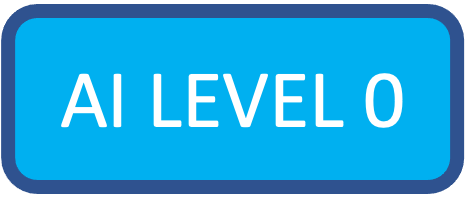
The author created the text without any AI assistance or tools for content generation, structure, or editing.
Basic AI tools such as spell checkers, grammar checkers, or synonym suggestions were used only for language improvement.
No AI assistance was used for researching the subject or creating text.
1 : Minimal AI Assistance
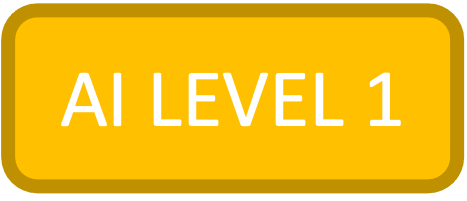
The author used AI for basic tasks such as researching the subject or providing relevant references, sources, or data.
AI tools like search engines or AI-powered research assistants were used for gathering information but not for content generation.
Basic AI tools for language improvement (e.g., spell checkers, grammar checkers) were also used.
2 : Low AI Assistance
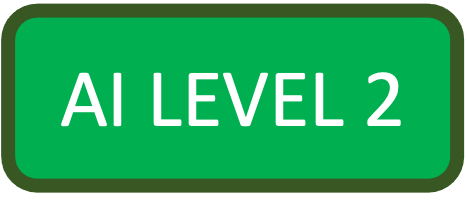
The author used AI for more advanced tasks such as idea generation, content suggestions, or sentence rephrasing.
AI-based tools like topic generators or AI writing assistants were used occasionally to support the author's work but were not the primary source of content.
AI assistance was also used for research and language improvement.
3 : Moderate AI Assistance
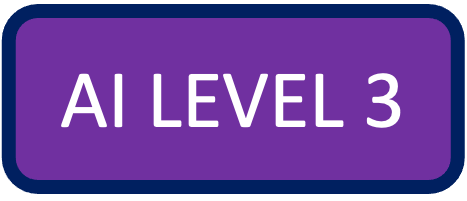
The author heavily relied on AI tools for idea generation, content suggestions, and sentence rephrasing, as well as research.
AI-based tools like AI writing assistants, content generators, or AI-powered research assistants were frequently used, and a significant portion of the text was influenced by AI-generated content and research.
4 - High AI Assistance

The author used AI tools for the majority of the text creation, including idea generation, content suggestions, sentence rephrasing, and editing.
AI writing assistants, content generators, or AI-powered research assistants played a crucial role in shaping the text, with the author providing only minor edits and guidance.
AI assistance was heavily involved in both research and content creation.
5 - Full AI Assistance
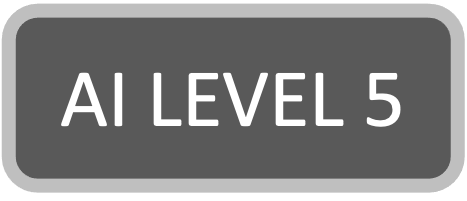
The entire text was generated by AI tools, with little to no human input or intervention.
The author may have provided initial prompts, keywords, or research topics but relied on AI to generate the content, structure, perform edits, and gather research materials.
To use AIRS effectively, authors should assess the level of AI assistance they utilised during the text creation process and assign a rating accordingly. This rating system will help provide transparency to readers and allow them to better understand the extent of AI involvement in the creation of the content they consume.
